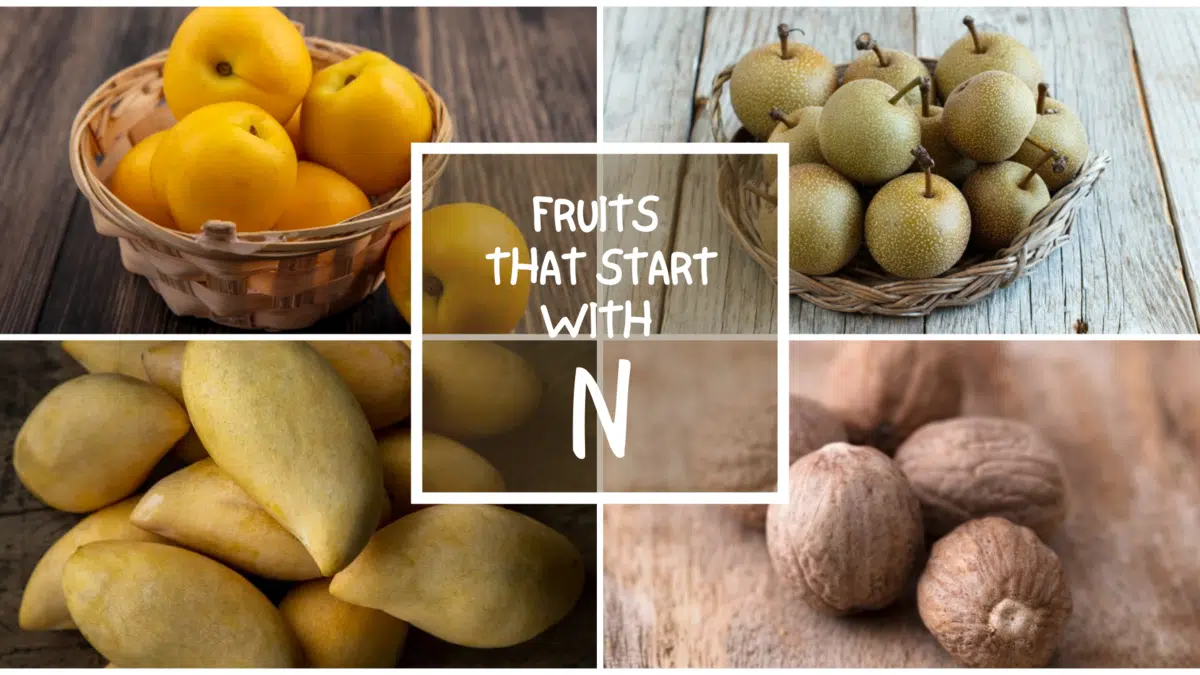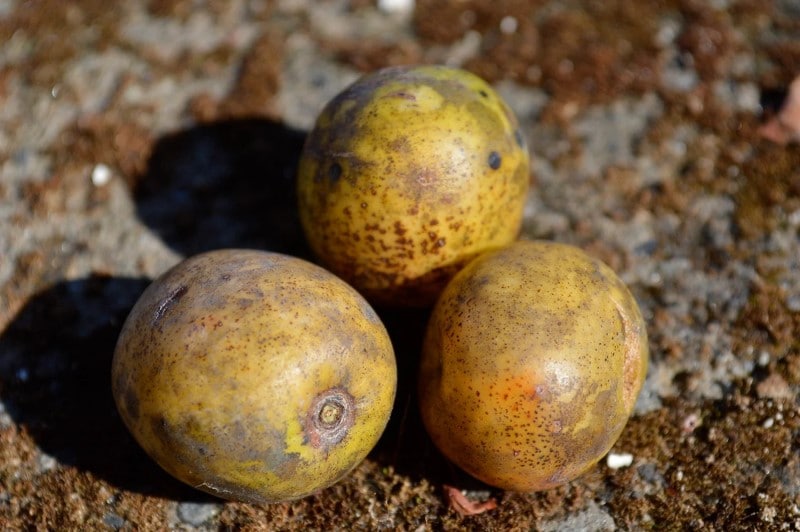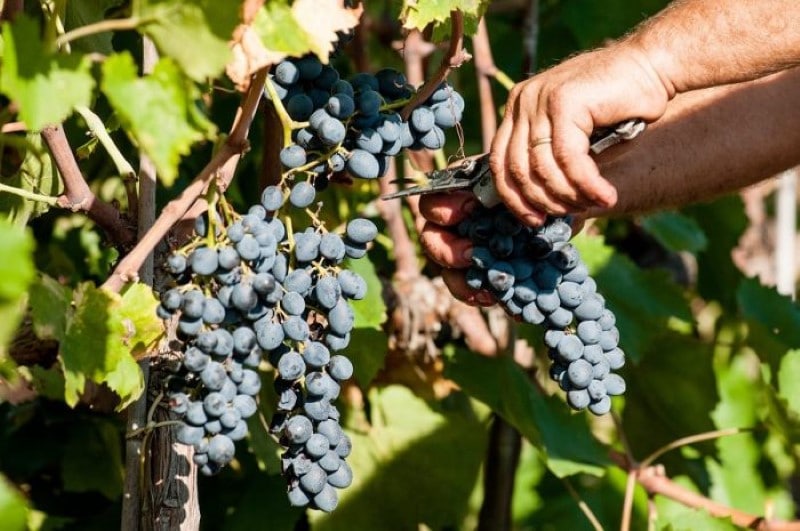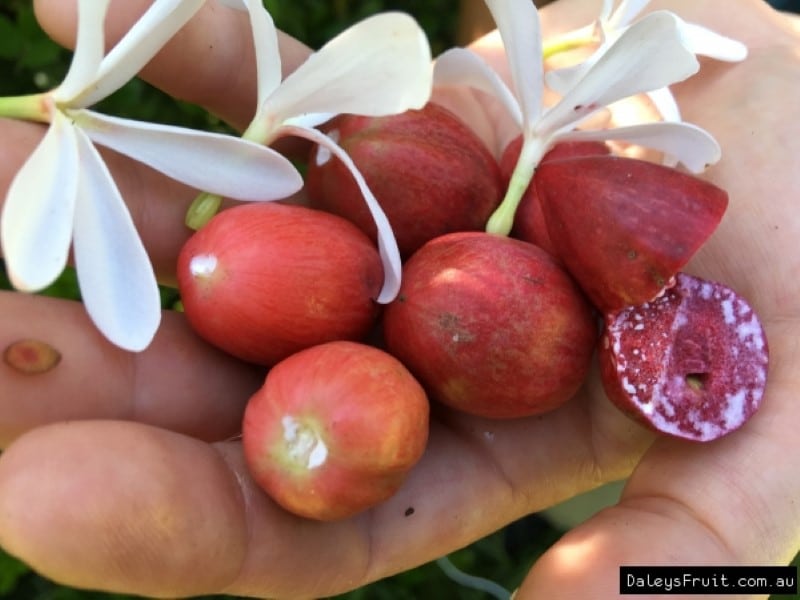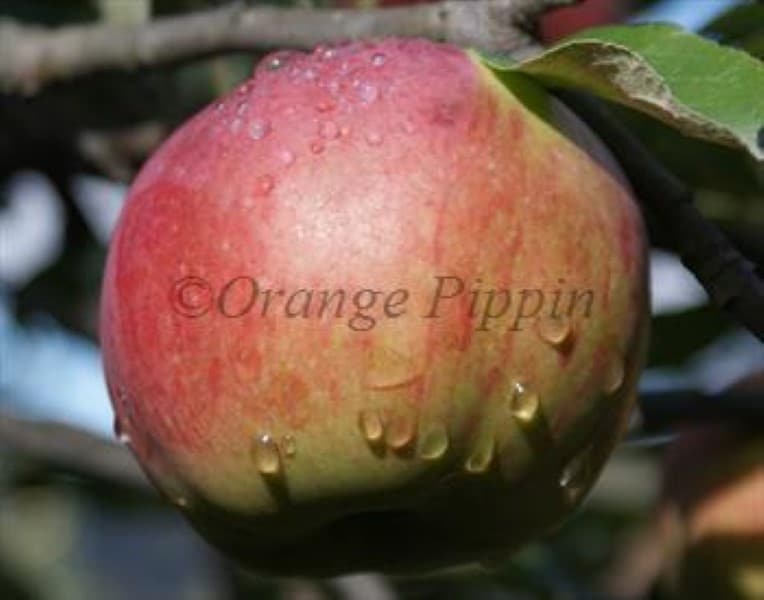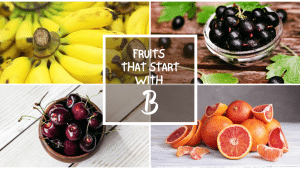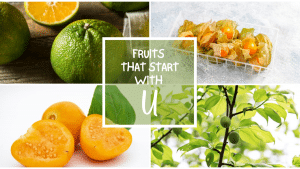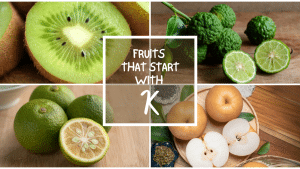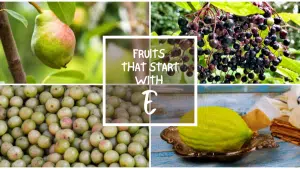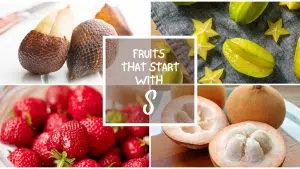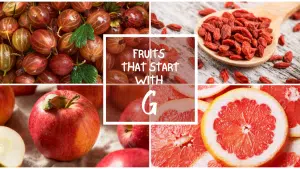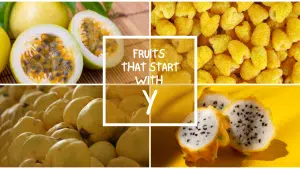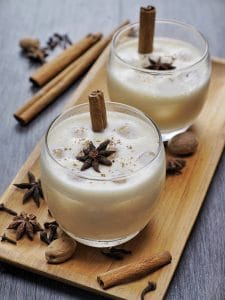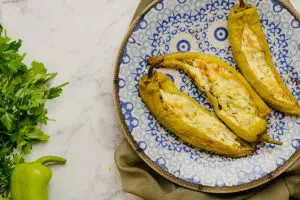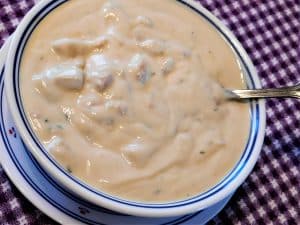All The Fruits That Start With N
Important Note: When you buy through our links, we may earn a commission. As an Amazon Associate we earn from qualifying purchases. Content, pricing, offers and availability are subject to change at any time - more info.
If you care to learn about some of the fruits that exist and you probably have not heard of them, this is the excellent article you should be looking at. There is a list of so many fruits that start with the letter N that you have been missing out on, yet they have very high nutritional value in your body, and they can be used or added to foods to make different kinds of recipes for you. These fruits range from sweet, juicy ones to sour, bitter ones. The list is endless, and they include fruits such as Nectarine, Nonda Plum, Nance fruit, and Nagami Kumquat fruit, among many others. This article will broadly explain each to you to know more about these fruits and many others.
- Nectarine Fruit
- Nepali Hog Plum
- Nectacot
- Nance
- Nutmeg
- Newton Pippin
- Nashi Pear
- Nagami Kumquat
- Navel Orange
- Neem
- Nannyberry
- Naranjilla
- Nam Dok Mai Mango
- Noni Fruit
- Nocera (Italian Grape)
- Natal Plum
- Northern Spy Apple
- Nageia Nagi
- Nonda Plum
- Final Letter
Nectarine Fruit
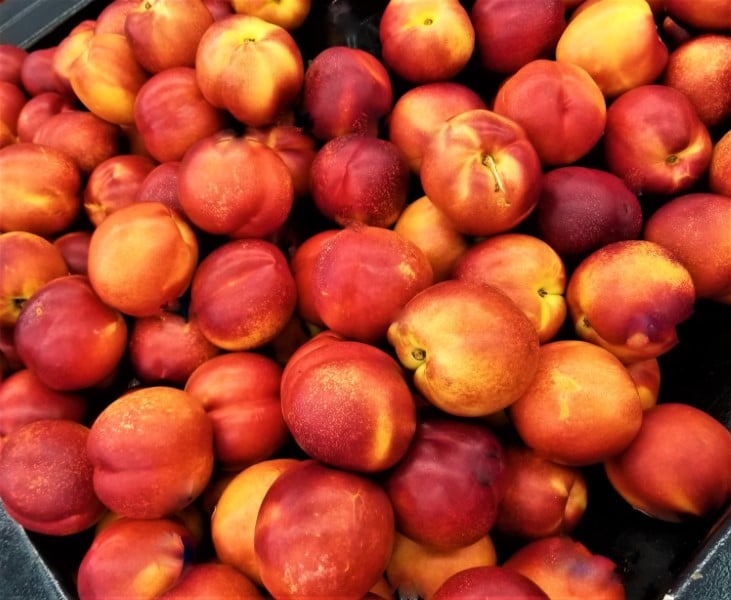
The scientific name of the Nectarine fruit is Prunus Persica. It is an edible fruit that is a type of peach — the origin of Nectarines in China over 2000 years ago. The smell of a Nectarine is similar to that of a regular peach, but the flavor of a Nectarine is fairly sweeter than that of a peach. It has an oval shape, a bright red color with yellow streaks, and average size. The crust of a Nectarine is flat and more precise than that of a peach.
A Nectarine can be eaten when raw and alone without peeling its skin. The flesh of this fruit can be used in making jam and syrup for bread. Jelly used for delightful cuisines can also be made from this fruit. It can also be a suitable ingredient for smoothies and fruit juices.
Nectarine fruit is a rich source of nutrients vital for the body, such as Lutein, beta-carotene, fiber, and vitamin C. These nutrients have countless benefits for your body. They help in digestion, heart diseases, diabetes, and those with high blood pressure. You can incorporate this fruit in your daily consumption either as a fruit or in any of the recipes discussed above because it is an excellent choice for a healthy body.
Nepali Hog Plum
The scientific name of Nepali Hog Plum fruit is Choerospondias axillaris. It belongs to the more prominent family called Anacardiaceae. It is commonly grown in Nepal and Bhutan, and its origin is Peru. This fruit is small in size with an oval shape. When immature, the Nepali Hog Plum fruit is green in color, turning yellow upon ripening. It has a very sour flavor that persists even when it is entirely ripe. It is used to make relatively common products in the market today. It is used to make sweets and pickles that are very delicious. The fruits are usually available in plenty when they are in season and can be preserved for a long time. They can be eaten when raw as a whole snack or made into juices and other products. The pulp of the Nepali Hog plum fruit can be mixed with cardamom powder, sugar, pepper powder, salt, and different kinds of additives for an incredible flavor. It can be used as a spice when dried with sugar powder. It can also make rolls of dried slices with a tender texture. Nepali Hog Plum fruit is rich in Vitamin C, antioxidants, and iron. These nutrients are essential for maintaining a healthy body and help fight diseases.
Nectacot
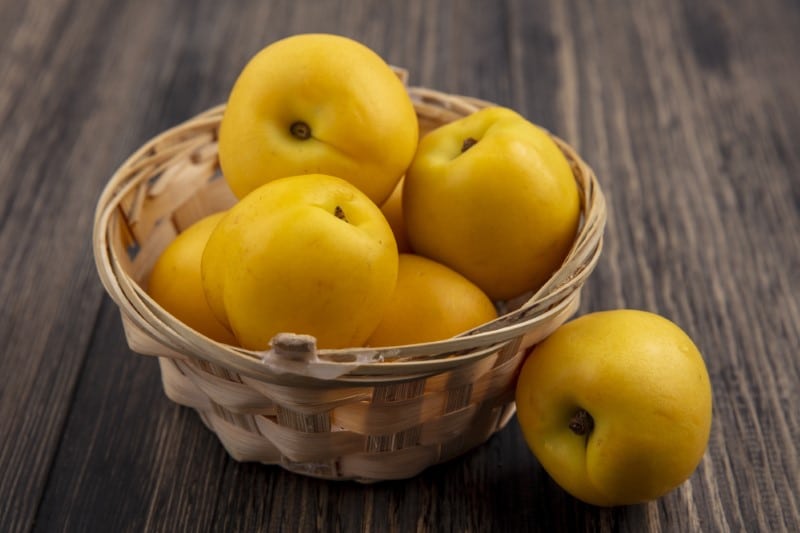
The scientific name of the Nectacot fruit is Prunus armeniaca. The fruit is originally from Florida. They are, however, now grown in other areas outside of the USA, like in South Africa, where they are vastly grown. A Nectacot is usually the size of an Apricot, a golf ball size, and its crust has the texture of a nectarine which is mostly smooth. It resembles most of the fruits of the rose family, such as the Nectarines, Apricots, and Peaches. This fruit has yellow skin, and it contains a juicy thirst-quenching sweetness. It is mainly consumed and enjoyed when raw because its natural taste is the best to feel. It can be used in pastry to bake desserts and make pies. Nectacot contains many vitamins and nutrients that make it very suitable for your health.
Nance
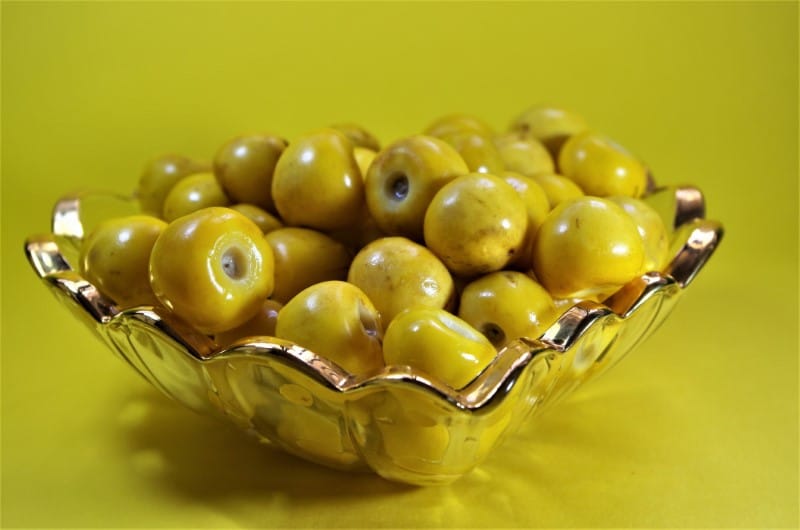
The Nance Fruit, whose scientific name is Byrsonima crassifolia, is commonly referred to as Yellow Cherry, Golden Cherry, or Golden spoon. When you first look at it, you will notice that it resembles a cherry; the only difference is that it has a yellow or orange color when ripe. It is usually green when young. The Nance Fruit is small in size and is primarily found in the Central, Caribbean, and Latin America. There is, however, a rare Nance fruit that is a red called Malpighia Mexicana, and it grows in some parts of Mexico and Costa Rica. Nance has a thin skin that is peeled easily. It also contains a very oily white flesh surrounding inedible white seeds. It is said to have a cheese-like, subtly sweet, and somehow acidic taste with a starchy feel. It has a soap-like aroma because of its high oil content and a mixture of banana and sour lychee smell. It is available during the late summer and early fall months. Harvesting them is easy because they fall from the tree when they are fully ripe.
They can be eaten when raw or cooked. It is used in sweet delicacies, jams, juices and as a flavor for ice creams. It can also be served as dessert. The Nance fruit is rich in vitamins A, C, K, and E, fiber, and minerals like phosphorus and calcium, among other nutrients. They help improve a healthy digestive system, boost skin health, and decrease the risk of cardiovascular diseases.
Nutmeg

Nutmeg, whose scientific name is Myristica fragrans, is a spice that belongs to the Myrtaceae family and is used in cooking to enhance food flavor. The tree produces its fruits twice a year. Its origin is the Pacific Island region, Southeast Asia and South Asia. The Nutmeg fruit contains a red stone after it’s peeled. After these stones undergo various processes, you get dried nutmeg seeds and ground into powder. Nutmeg flesh is used to make sweets. In Indonesia, it is used to make a popular dessert referred to as manisan pala. The Skin of a nutmeg fruit can be boiled or blended to make juice. Nutmeg powder is a popular spice used in curries, sausages, porridge, soups, and stews.
Nutmeg contains minerals such as zinc, iron, magnesium, and phosphorous, which have therapeutic effects on the body. They help cure insomnia, reduce stress and pain, and purify the body. When used excessively as a spice, it may cause allergic reactions in the body.
Newton Pippin
Newton Pippin, which is also referred to as Albemarle Pippin, is an apple that dates back to the 18th century. It is one of the oldest apples that originated in the United States. The Newton Pippin Apple is well-known for its strong scent. The fruit is usually in season towards the end of the year because it needs both the summer and fall climatic conditions to be ripe and have the exact required flavor. After harvesting, the Newton Pippin is sweeter when stored for a month or two before consumption. The fruit exists in two types: green and yellow, depending on the location and intensity of sunlight. It is difficult for them to have a single color, so they often have a mixture of different colors. It is well recognized as a nutritious and high-quality apple used for preparing many food recipes, cider, and fruit juices. The Newton Pippin fruit preserves its rich, delicious taste and nutrients even after cooking.
Nashi Pear
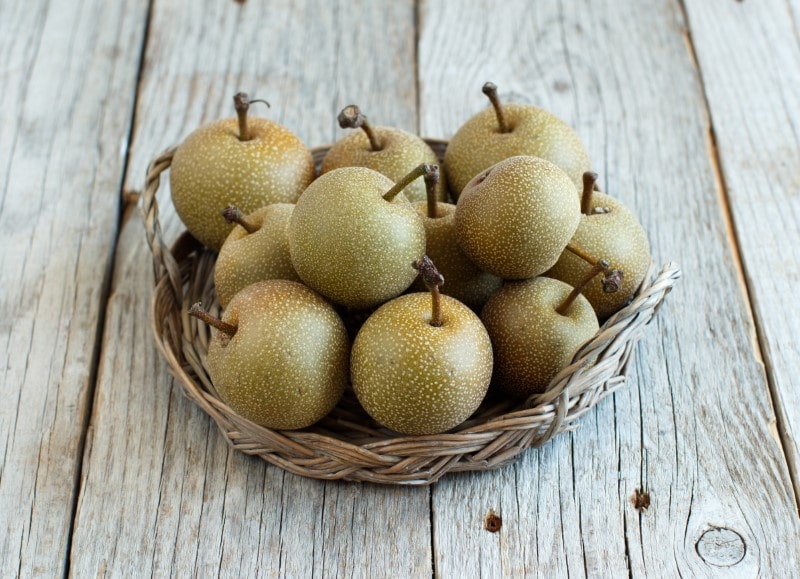
The Nashi pear fruit is also referred to as Apple Pear or Asian pear. It has been a native fruit of China and Japan for over 3000 years. This fruit has an apple-like shape, and it is significant. It was one of the most expensive and finest fruits that only the rich could enjoy. It has a sweet fragrance, and its flesh is succulent, crispy, and white. This pear has an almost apple-like shape. It can be pretty significant and have a sweet odor. The pulp inside of the fruit is white, crispy, and succulent. As the fruit ripens and turns a bold yellow, it loses the crispy texture. It can be used to prepare a side dish, add to soup, or put in your smoothie. When wrapped and stored well, the Nashi Pear fruit can stay fresh for an extended period. Nashi Pear contains fiber and Vitamin C that keeps your body healthy and delightful.
Nagami Kumquat
Nagami kumquat originates from Asia. It is usually in season, from late winter to spring. It is also available in the United States, highly used commercially. 90% of the kumquat is grown in Florida, Texas, and California. Nagami Kumquat fruit is small in size with an oval shape. It has a fresh and slightly sour taste, making it appropriate for making sweet and spicy dishes. Its peel has essential oil and is a bit spicy. You can use it topping on cakes; it can be added to salads or used in jams and cocktails. The fruit helps to reduce inflammation, boost collagen production for the skin, strengthen the immune system, and fight against oxidants.
Navel Orange
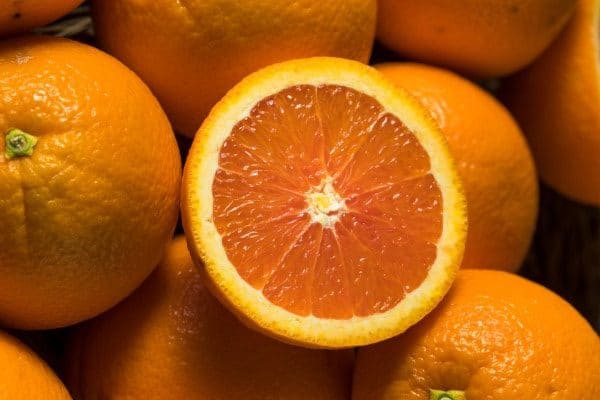
The Navel orange, whose origin in Brazil in the 1800s, is a seedless winter orange. It is usually harvested at the beginning of the year when it’s at its peak and mid-year. The Navel orange has a round to slightly oval shape. Its appearance and Skin are similar to that of the other types of oranges. This fruit is juicy with a sweet, scented flavor and a bit sour with low acidity, like other oranges. It is often used in making orange juice or pleasant jams for bread. It can also be eaten when fresh and raw as dessert, which is addictive because of its sweet taste. A Navel orange has a lot of water, fiber, and low carbs. It is an excellent source of nutrition. It helps those who want to lose weight, those on a diet, and those who care about skincare.
Neem
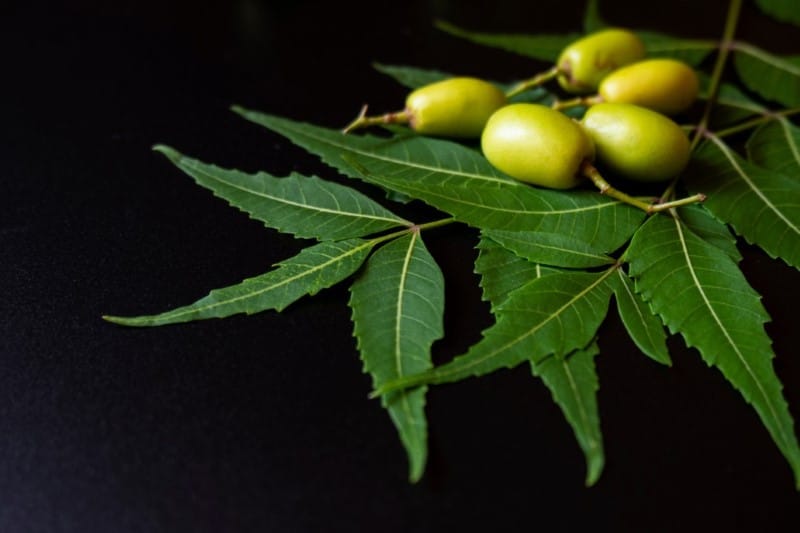
Neem, which is also called Indian lilac, is a natural herb. Neem fruit grows typically in small groups. It is oval and has green Skin. Neem contains antioxidants that have antimicrobial effects used to offset certain fungi and viruses. Extracts obtained from the fruits’ seeds can be used in dental and hair products. For instance, Shampoo containing Neem deals with the issue of dandruff or head lice. It can be used in dental products such as toothpaste, tooth powder, and mouthwash to relieve toothache and enhance oral health. It can also be used to make Neem Oil good for your Skin. It should be used sparingly at first to check for any possible allergies to the product.
Nannyberry
Nannyberry is also referred to as Blackhaw, Viburnum Lentago, Wild Raisin, and Sweet Viburnum. It originated in the northeastern and Midwestern United States. When mature, the fruit smells like wet fleece, which earned its name: “Sheepberry.” The Nannyberry is a small edible fruit. It has a juicy and sweet taste when ripe. When young, it is red and turns dark black when ripe and mature. This fruit is food to birds and wildlife. It can be consumed and enjoyed when raw or used in some salad and smoothie recipes. The fruit helps people with menstrual irregularity and measles by stimulating nerve health and relieving pain, anxiety, and crumps. However, people with kidney stones and pregnant and lactating women should avoid this fruit because it could cause allergic reactions to them.
Naranjilla
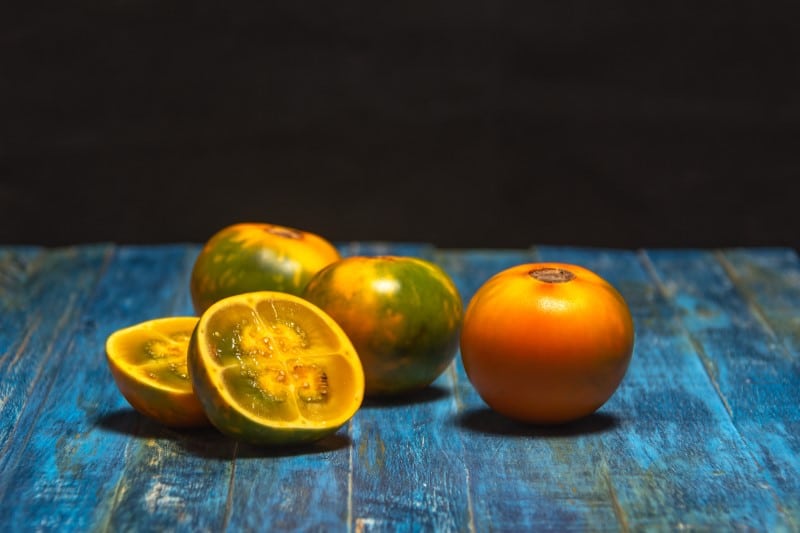
Naranjilla means “Little orange,” It is similar in shape and color to the usual types of oranges. This fruit, however, belongs to the family of eggplant and tomato. Its origin is the mountainous regions of Ecuador and Colombia; it is widely spread to other areas like Panama, Costa Rica, Guatemala, and Peru. It has been used to make a popular drink by the Incas since the 17th century. It contains the smell of citrus fruits, but its flavor is a mixture of juicy kiwi, sweet pineapple, and sour lime. To reduce sourness in the juice, sugar is often added to it. Locally people enjoy consuming the Naranjilla fruit by eating it raw. This fruit is also used to make sauce, wine, and bread. It also has health benefits where it helps to detox the body, reduce the risk of heart diseases, strengthen bones and prevent cancer.
Nam Dok Mai Mango
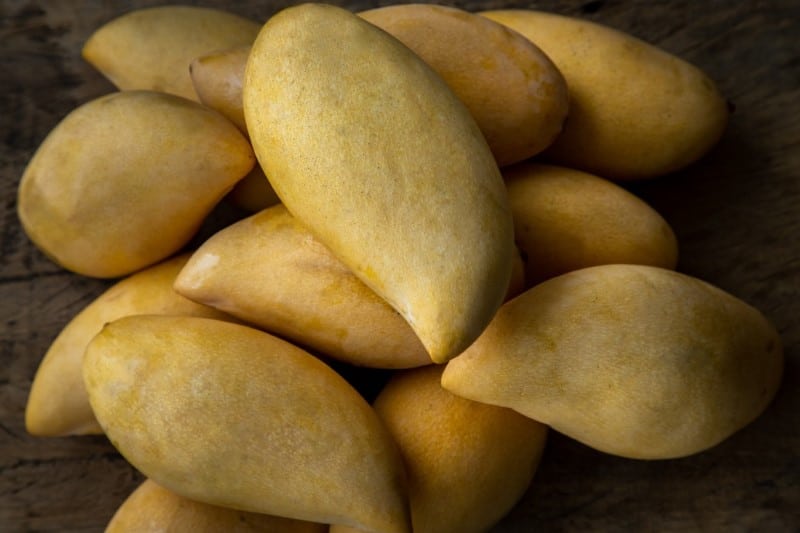
Nam Dok Mai Mango originates from Thailand. It is a type of mango that represents other mango varieties worldwide in appearance and taste. It is green when young and turns yellow when ripe. You can best enjoy it when it is fully ripe because its flesh is creamy yellow, smooth, sugary, and extremely tasty. When it is immature, it has a slightly tart taste. It can be enjoyed naturally when raw or added to your dessert or smoothie. It can also be used in preparing delicious sticky mango rice. This fruit has multiple health benefits for your body. It has nutrients and vitamins that help with blood pressure, vision, Skin, and brain problems.
Noni Fruit
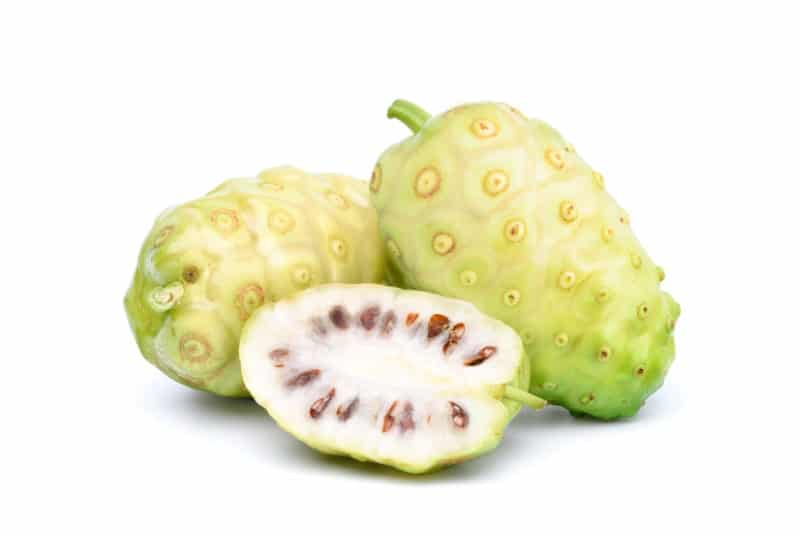
The scientific name of the Noni fruit is Morinda citrifolia. It originates from Southeast Asia and Australasia and is now widespread in Tropical areas. The fruit has a rough skin and is the size of a custard apple. When young, it is light green and turns Yellow with a smooth glowing skin when ripe. It usually resembles a tuber. It has a bitter taste and an unpleasant smell similar to jackfruit. It is, however, soft and edible. It is combined with other fruits to eliminate the unpleasant smell and make a healthy juice. It helps with arthritis, pain, infections, and constipation. The juice has antioxidants and Vitamin C, vital for skin and immune system health.
Nocera (Italian Grape)
Nocera is a high-quality grape whose origin is the famous wine region of Italy called Sicily. Nocera maintains its acidity even under extremely high temperatures. Nocera grapes clusters are medium-sized with a cylindrical shape containing many oval-shaped berries. When young, the grapes are green, turning purple-black when ripe. It yields a ruby-red wine with purple shades, a bold scent, tannin, and a fixed acidity. Nocera wine contains an exclusive taste of essence and high alcohol volume while maintaining its natural grape taste. Nocera fruit is often used in wine and in preparing dishes instead of consuming it when raw. It can be used in foods such as deep-dish pizza, braised lamb shanks, and grilled beef with cheesy polenta.
Natal Plum
Natal plum, whose scientific name is Carissa macrocarpa, is a shrub belonging to the Apocynaceae more prominent family. It is native to Natal, tropical, and South Africa. Its local name from South Africa is Num-Num. It has other native names depending on the sub-tribes in Africa. Natal plum fruit is round in shape with an elongated point. It has bright red skin and flesh. The exciting thing is that the fruit of the Natal plum tree is the only edible part. The leaves and trunks are very poisonous and hence inedible. When ripe, the Natal Plum fruit has a sweet and tart taste. Its tartness is similar to that of cranberries. The fruit can be alone when raw or sliced and added to salads. It is also used to make jams. It goes well with Indian spices and herbs. It can also be added to soups or sauces to give them a good taste. Natal Plum fruit has vitamins C, riboflavin, thiamine, and minerals, such as iron, magnesium, and calcium.
Northern Spy Apple
The origin of the Northern Spy Apple is the northeastern United States, where it was vastly developed and on a few other farms on the west coast. This fruit can thrive for up to three months in cool and dry conditions. It is harvested towards the end of the year in October and November. It has a grand red skin with light yellow and green strikes on the head of the fruit. This is one feature that distinguishes the Northern Spy Apple from other types of apples. The fruit usually appears to have a somewhat tart taste when you first bite it, but as you continue chewing, it becomes sweeter. It can be eaten alone when raw or used in dishes from roasting, making soup, grilling, or frying. It is also popular in ciders, tarts, cobblers, or baked foods.
Northern Spy apple has many nutritional benefits to the body. It contains fiber which helps to reduce the level of cholesterol in the blood. It is also suitable for glucose metabolism in the body, which makes it ideal for people with diabetes.
Nageia Nagi
Nageia Nagi Fruit, also referred to as Asian bayberry, belongs to the Podocarpaceae larger family. This plant grows in low hilly areas. Its wood is used to make high-quality household furniture. It produces a fruit that is, however, rarely consumed. The seed of this fruit produces oil used in industry and lighting. It requires relatively moderate conditions and a location with hot and humid summers to thrive. It is thus hard to be grown in the US, New Zealand, and Europe.
Nonda Plum
Nonda Plum, whose scientific and common name is Parinari Nonda, belongs to the more prominent family called chrysobalanaceae. It is popularly grown in Northern Australia and New Guinea and is a sparse shrub or small tree with many bunches of small fruits. The Nonda Plum fruit is of a small to medium size. It is edible and is harvested from the wild areas. The fruit-producing tree grows and thrives better in a suitable environment instead of a different climate. Nonda Plum fruit has an egg-like shape. It has a yellow-brown color with dark brown spots. Its crust has soft hairs on the outside. The flesh of the fruit is soft and spongy. It has a flavor similar to an apple but a softer and relatively dry one. It has a mild taste and is often taken in prepared dishes.
Final Letter
This is a comprehensive list of all the fruits that start with the letter N. Some of these fruits may be new to you, so it is high time you get a chance to explore, find, and experience them. Most of them, as shown above, contain a high nutritional value, so it is suitable to take them for a healthy body.
